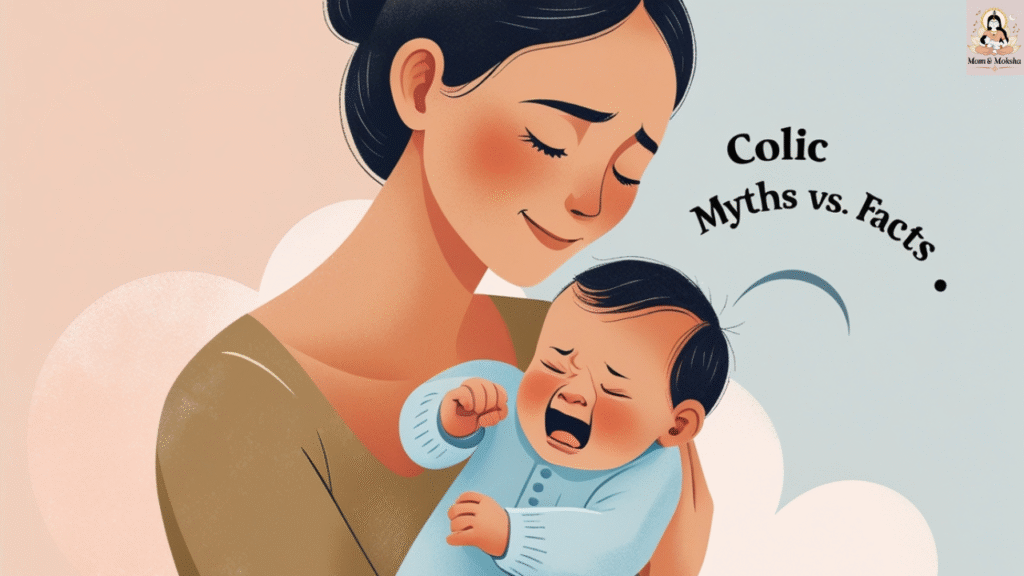Introduction: Why Lullabies Still Matter Today
Sleep is the most sacred gift you can give your baby — and lullabies are nature’s most timeless sleep tool. In a world filled with gadgets, apps, and “quick fixes” for sleep, the gentle rhythm of a baby sleeping song continues to stand out as one of the simplest yet most powerful methods of calming a little one.
Unlike artificial sounds, baby sleep music and lullabies carry emotional warmth and human connection. When a parent hums or plays a soothing melody, the baby not only relaxes physically but also feels emotionally secure. This is why mothers across cultures instinctively sing to their children — from the Brahms’ Lullaby in the West to the traditional Ragas in India.
 |
Studies show that baby sleep music songs lower stress hormones, stabilize breathing, and encourage longer sleep cycles. For newborns, who are still adjusting to life outside the womb, lullabies act as a bridge — mimicking the steady rhythms and calming sounds they were used to before birth.
Whether you are holding a fussy newborn at midnight or trying to calm a restless toddler, a lullaby is more than just a song — it’s a memory in the making, a moment of bonding, and a natural therapy for both parent and child.
🎧 Watch Now: Soothing Indian Lullaby
Crafted with love to help your baby fall asleep peacefully.
The Ancient Roots of Lullabies
Lullabies are not just songs — they are stories, prayers, and healing vibrations passed down through generations. Long before sleep apps and gadgets, parents relied on the power of the human voice and the rhythm of music to comfort their babies. Even today, baby sleep music lullabies are proof that the simplest traditions remain the most effective.
Lullabies in Indian Tradition
In Indian households, lullabies (known as lori, palna geet, or thaalattu) were an essential part of a baby’s early life. Mothers, grandmothers, and caregivers used them not only to put children to sleep but also to pass on values, prayers, and blessings. These baby sleeping songs often included:
Realated post: 🌸 Naamkaran Sanskar: The Vedic Art of Naming Your Baby
In India, lullabies (known as lori, palna geet, or thaalattu) were often infused with:
-
Ragas: Melodic patterns like Neelambari or Ananda Bhairavi, known to relax the nervous system and balance emotional energy. These traditional sounds are early forms of baby sleep music for newborns that promote both calmness and deep rest.
-
Nature imagery: Rivers flowing gently, the moon smiling, or the evening breeze swaying — soothing words and rhythms that mimic the environment of safety and peace.
-
Devotional chants: Many lullabies carried subtle mantras or divine names, believed to protect babies from negative influences and promote emotional stability.
Related Post: Unlock the Power of Tulsi: Daily Puja Rituals, Tulsi Mala & Tulsi Vivah 2025
Lullabies Across the World
While India has its own treasure trove of sleep songs, other cultures also valued the healing nature of lullabies. In the West, Mozart Baby Sleep compositions and the famous Brahms’ Lullaby are timeless examples of soothing baby music that continue to be played for children today. These baby sleep music songs are not just melodies; they are scientifically shown to reduce heart rate and bring a sense of calmness, much like Indian Ragas.
Sound Therapy in Ancient Texts
Ayurvedic and Vedic traditions describe the power of Nada Yoga (the yoga of sound) — where sound vibrations influence body, mind, and spirit. In this context, baby sleep music and lullabies are seen as early sound therapy, helping babies transition smoothly from the womb to the outside world.
Even the rhythmic “shh-shh” sounds mothers naturally make are a form of baby sleep sounds, resembling the womb environment that calms infants. This explains why modern parents now use baby sleeping music and white noise machines, unknowingly continuing an age-old practice.
Emotional & Practical Role of Lullabies
For centuries, lullabies have been more than just bedtime songs. They carried hidden purposes:
- To soothe colic in babies by calming their nervous system through rhythmic repetition.
- To create a predictable newborn sleep routine using familiar baby sleeping music each night.
- To provide comfort for parents too — singing a baby sleeping song often reduces maternal stress and helps in emotional bonding.
Did You Know?
-
In South India, the Raga Neelambari is traditionally sung to make babies fall asleep — it’s one of the oldest known baby sleep music lullabies.
-
Many Indian lori (lullabies) mention Chanda Mama (the moon), stars, rivers, and wind — nature’s own soothing imagery to comfort babies.
-
The famous Brahms’ Lullaby, composed in the 19th century, is still one of the most played baby sleeping songs worldwide. Even today, many parents search for “Mozart Baby Sleep” and Mozart Brahms Lullaby playlists as trusted baby sleep aids.
-
Research shows that babies exposed to relaxing baby music sleep faster and cry less, especially when struggling with colic in babies.
-
Ancient Ayurveda mentions Nada (sound) as a healing force — early mothers instinctively used baby sleep sounds to mimic the womb’s rhythm. This is why modern white noise and baby sleeping music still work so effectively.
The Science Behind Lullabies and Baby Sleep
For generations, parents instinctively used baby sleep music lullabies to calm, comfort, and settle their little ones. Today, modern neuroscience confirms that these gentle melodies are more than just songs — they are powerful tools for improving sleep quality, emotional well-being, and brain development in babies.
🎵 How Baby Sleep Music Works
When a baby listens to baby sleep music songs or a soft baby sleeping song, several physiological and psychological changes take place:
-
Stress Relief & Calmness: The gentle rhythm of baby sleeping music lowers cortisol (the stress hormone) and soothes crying spells. This is especially helpful for colic in babies, where fussiness and irritability are common.
-
Heartbeat & Breathing Regulation: Just like in the womb, repetitive baby sleep sounds help stabilize heartbeat and slow down breathing, creating a womb-like sense of safety.
-
Sleep Cycle Improvement: Studies reveal that baby sleep music for newborns shortens the time it takes to fall asleep and increases REM sleep — the stage critical for brain growth.
-
Brain Development Boost: Classical compositions such as Mozart Baby Sleep tracks and the timeless Mozart Brahms Lullaby activate parts of the infant brain linked to memory, attention, and language development.
✅ Key Benefits of Baby Sleep Music Songs
-
🌙 Encourages deep, uninterrupted sleep for newborns and toddlers.
-
🧠 Strengthens neural pathways, supporting cognitive growth and learning.
-
❤️ Enhances emotional bonding when parents sing or play lullabies.
-
🕊️ Helps manage colic in babies by reducing overstimulation and fussiness.
-
🌊 Creates a calming environment when baby sleeping music is combined with gentle baby sleep sounds like white noise.
🌍 Science Meets Tradition
Across the world, cultures have discovered the same truth: soothing baby music works. Indian mothers use Ragas like Neelambari as natural baby sleep aids, while parents in the West rely on the Mozart Brahms Lullaby and other classical pieces as trusted bedtime music. Both traditions prove that whether it’s an ancient lori or a modern baby sleeping song, the science behind music’s effect on babies is universal.
What Makes This Lullaby Special?
- Melodic Indian flute & ambient white noise
- 432Hz tuning – believed to promote healing
- Soft, slow rhythms proven to help babies fall asleep faster
This lullaby is crafted not just for the baby but also for tired parents needing a moment of peace.
Correct Way to Use Lullabies for Better Sleep
To get the most from baby sleep music:
- Timing: Play it during the wind-down bedtime routine.
- Environment: Keep lights dim and room cool.
- Volume: Gentle, not too loud.
- Consistency: Use the same music every night to build routine.
- Avoid screen light – Use audio-only or background play if possible.
🎧 Tip: Loop the video overnight for long-lasting white noise.
If your little one often cries for long stretches despite your best soothing efforts, it might not just be a matter of sleep comfort—it could be colic. Understanding the signs early can help you find gentle relief methods. I’ve shared a detailed guide here: Colic in Newborns: Causes, Symptoms, and Gentle Remedies for Baby Relief.
Lullabies & Colic in Babies
Every parent knows the heartbreak of watching their little one cry uncontrollably. One of the most common causes of prolonged crying in newborns is colic in babies — sudden spells of fussiness, discomfort, or gas pains that usually appear in the evenings. While there is no single cure, gentle infant soothing techniques, especially baby sleep music lullabies, can make a big difference.
🎶 How Lullabies Help with Colic
-
Rhythmic Repetition: The steady beat of a baby sleeping song mimics the sounds of the womb, helping to calm the baby’s nervous system.
-
White Noise Comfort: When paired with baby sleep sounds or ambient background noise, lullabies create a cocoon-like environment that reduces overstimulation.
-
Emotional Bonding: Holding your baby close and singing a baby sleeping music lullaby reassures them emotionally, lowering their distress.
-
Relaxation for Parents Too: Calming relaxing baby music can ease parental stress, which in turn helps the baby feel more secure.
✅ Tips for Using Baby Sleep Music Songs During Colic Episodes
-
Choose soft, repetitive baby sleeping music or a soothing Mozart Baby Sleep track.
-
Play familiar tunes such as Mozart Brahms Lullaby or traditional Indian lori to build a sense of routine.
-
Keep the lights dim and gently rock your baby while the baby sleeping song plays.
-
Use the same baby sleep music for newborns nightly — consistency builds comfort and reduces fussiness over time.
Tradition + Science
Ancient Indian mothers instinctively sang lullabies during colic episodes, while modern research shows that music lowers cortisol and heart rate in infants. This explains why both traditional palna geet and modern playlists of baby sleep music songs remain effective even today.
Reference & Useful Links
- Harvard Study on Music & Sleep
- Indian Ragas for Healing
- National Sleep Foundation: Baby Sleep Guidelines
- Ayurvedic texts on Nada Yoga (the yoga of sound).
Final Thoughts: The Gift of Sound
In our fast-paced digital world, we often overlook the timeless gift of lullabies. While gadgets and apps may help, nothing compares to your warmth, rhythm, and the healing soundscape of a lullaby. At Mom & Moksha, we celebrate these traditions and encourage parents to embrace them for nurturing, bonding, and deep sleep.
So tonight, dim the lights, press play on this relaxing baby music, and let love, rhythm, and melody guide your baby into peaceful dreams.
✨ Because sometimes, all your baby needs to fall asleep is not a gadget, but your gentle voice and a timeless lullaby. So tonight, press play on this Soothing Lullaby, snuggle up, and let love sing your baby to sleep.





